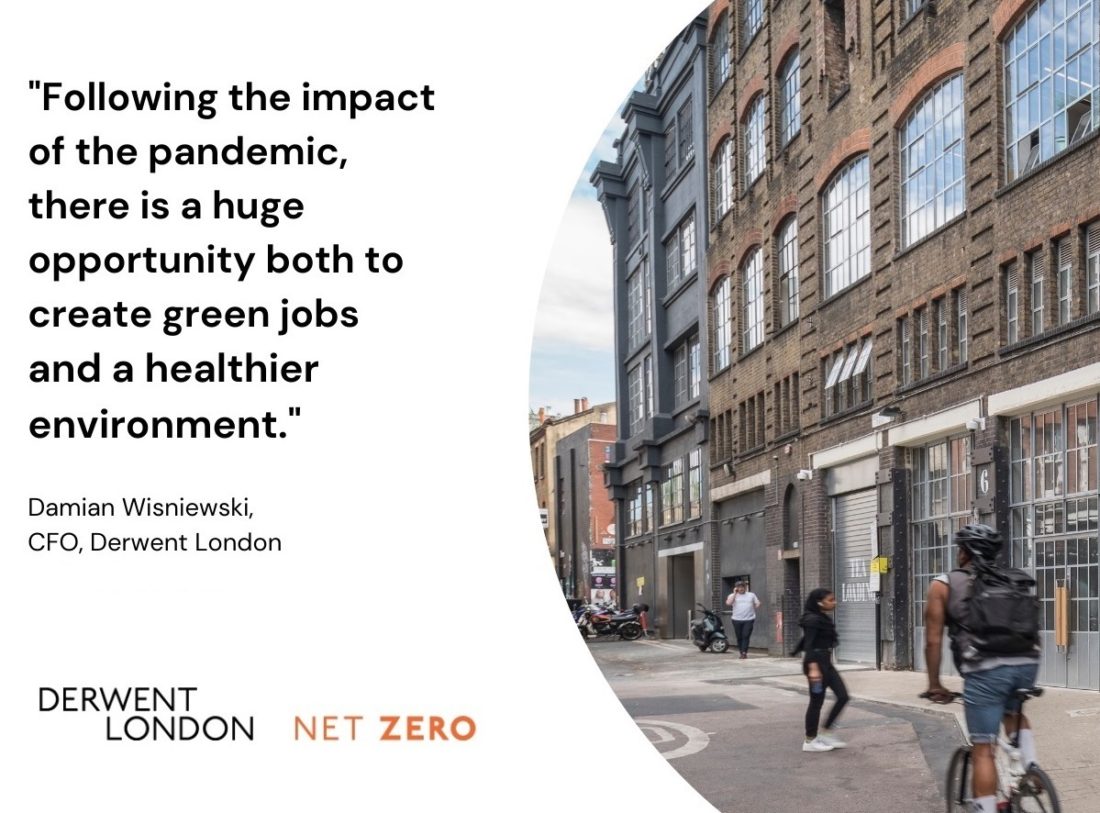At the recent London Climate Action Week summit, Mayor Sadiq Khan reaffirmed his target for London to be carbon neutral by 2030. This would be a full five years ahead of the latest national target of achieving a 78% reduction in net carbon from 1990 levels. As the capital contributes a significant proportion of total UK emissions, the case for bringing London’s date and ambition forward is clear. Moreover, as we look to build back our economy following the impact of the pandemic, there is a huge opportunity both to create green jobs and a healthier environment. The Mayor highlights that climate change “is not something that can be left to others, it’s everyone’s business”.
The word “everyone” is key. At Derwent London, as one of London’s Business Climate Leaders and the largest London-focused office REIT, we have been working to reduce the embodied and operational carbon in our buildings for several years now. With 80+ commercial buildings in the capital across 5.6m square feet and home to over 350 organisations, collaboration with our occupiers is essential to making this work.
We are also working together with many other stakeholders as part of our pathway to net zero carbon by 2030. These include investors, funders, contractors, our supply chain, consultants and agents, with whom to share our respective insights and implement solutions. Following the launch in 2019 of our Green Finance Framework and the arrangement of a revolving credit facility with a £300m green tranche, it is heartening to see the proliferation of green or ESG-linked bonds and other financial instruments across our sector. Initiatives like these help to ensure that climate change targets are more broadly embedded within and across businesses.
As well as setting high standards for reducing emissions in new developments, Derwent London is focused on retrofitting existing buildings. This is at least as important in London because of the city’s scale and how dominated it is by historic stock. Since 2014, our Tea Building in Shoreditch has been subject to a rolling programme, the ‘Green Tea’ initiative, to do just that. As well as upgrading the thermal efficiency of the building envelope, a heat exchange system pumps warmth from the sunny side to the colder, shady side. We have also adopted an all-electric energy supply strategy and have converted all electricity supplies across our portfolio to renewable sources. We are updating leases to reflect the climate imperative, again working with our occupiers to help achieve net zero carbon targets. None of our efforts would be possible without the commitment of the entire Derwent London team. While we now have five people dedicated to sustainability, it is the buy-in from across the whole business that delivers our strategy.
Many of our sector peers have taken important steps too but the truth remains that all of us need to make much more progress to achieve our climate ambitions. At Derwent London we continue to work with our consultants to minimise our carbon impact, are undertaking carbon appraisals for all new projects and have studies underway on carbon accounting to better understand both the embodied carbon across our portfolio as well as our annual emissions, including Scope 3 (occupier emissions). We are also working towards the increasingly strict energy performance targets for buildings, by upgrading those that do not yet meet the higher standards of an EPC ‘B’ or better. It is good to report that most of our occupiers are aligned with these aims. When it comes to the business case, lower carbon buildings with a better working environment are more appealing, so we believe they will let more quickly and command higher values. In the last couple of years, we have seen a sea-change among our shareholders and funders with climate change and ESG topics now very high on their agendas. As such, these initiatives are not only the right thing to do by society and our planet, but they are also good for business and growth.
We recognise that we cannot yet be a truly zero carbon industry. However, we can close the gap with a focus on renewable energy, materials such as low carbon concrete and cross laminated timber, recycling, careful water usage, green finance and collaboration with those developing advanced technologies. There is so much more to do but this year of COP26 in the UK is an important opportunity to catalyse momentum in the property sector to make real progress towards a climate-safe future. It is everyone’s business.

